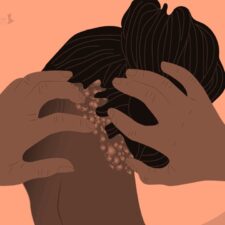
Peyronie’s disease is a condition in which scar tissue can cause the penis to curve. This disease can be painful for men and cause them to struggle with getting an erection.
Not everyone with Peyronie’s disease needs treatment because symptoms can clear up on their own, according to Johns Hopkins School of Medicine.
Most doctors may recommend injections of certain medications into the penis or surgery to remove some plaque in severe cases where the symptoms are persistent.
However, you can also help your condition along by trying out different stretching exercises. Gentle stretching of the sheath can correct the curvature by breaking down some of the scar tissue, according to Massachusetts General Hospital.
Research shows that trying exercises that use special devices can also be effective at straightening and stretching the penis back into its normal shape and length during erection.
The following exercises have been proven to help men dealing with Peyronie’s disease:
Penile traction therapy (PTT)
When to Talk to Your Doctor About PTT
- You’ve recently been diagnosed with Peyronie’s
- You have less than 90° curvature
- You want to try non-surgical or combination therapy
- You’ve had penile shortening and want to preserve or restore length
- You’re recovering from surgical correction
Benefits of PTT in Peyronie’s Disease
- Reduces curvature (especially during the acute phase)
- May reverse shortening of the penis
- Improves outcomes when combined with other treatments like:
- Xiaflex® injections
- Surgery (post-op recovery and length maintenance)
- Can help men avoid surgery if curvature is moderate and function is retained
How to Use PTT
When doing Penile traction therapy (PTT), you will wear a device on your penis that consists of two parallel stabilizing rods that run alongside the shaft of the penis for a certain amount of time daily. The rods are connected to a plastic support ring at the base of the penis and a distal ring below the head of the penis. They can also be extended to stretch the penis. This technique can provide a modest improvement in lengthening the penis and correcting the curve if you are in the acute phase. PTT is also great for men looking to have surgery, as it can aid in retaining penis length.
Daily use is key. Typically:
- 30 minutes to 3+ hours per day, depending on the device and doctor’s recommendations.
- Can be broken into sessions throughout the day.
- Use for 3 to 6 months or longer to see results.
Popular Traction Devices
- RestoreX® (Mayo Clinic-developed; used in clinical trials)
- Penimaster PRO®
- Andropenis®
- SizeGenetics®
- RestoreX is FDA-cleared for Peyronie’s and has the most clinical data backing its use.
Clinical Evidence
- RestoreX trial (2019):
- Average 17° curvature reduction
- 1.6 cm length gain
- Just 30–90 minutes per day over 3 months
- Other studies also show that early use in the disease process (acute phase) leads to better outcomes.
Safety and Side Effects
Generally safe if used as directed
Possible side effects:
- Skin irritation
- Discomfort or pressure
- Bruising if over-tightened or overused
- Avoid use during erection or if pain is present

Vacuum erection devices
A vacuum erection device (VED) goes over the penis like a sheath and stretches and pulls it with suction.
This vacuum is often called a “penis pump” and is associated with making the penis larger, but it also has positive effects on Peyronie’s disease. A 2010 study was conducted on 31 people with the disease. The study found that most of the participants experienced improvements in penile length, curvature, and pain after 12 weeks of using VED for 10 minutes twice a day. It should be noted that the curvature got worse after using VED for three participants.
How a VED Works
- A cylinder is placed over the penis.
- A pump (manual or battery-powered) creates a vacuum, drawing blood into the penis.
- A constriction ring is placed at the base of the penis to maintain the erection.
Benefits for Peyronie’s Disease
- Improves blood flow: May help preserve penile tissue health.
- Maintains length: Can help prevent shortening due to scarring.
- Stretches tissue: Gentle daily use may help reduce curvature over time.
- Improves erections: Especially useful if Peyronie’s is associated with ED.
How to Use It (Therapeutic Use)
- Use daily, especially during the acute phase (first 12–18 months of symptoms).
- Do not use the constriction ring for therapy sessions — that’s for intercourse.
- Each session lasts around 10–15 minutes, aiming for a full (but not painful) erection. Risks and Considerations
Mild bruising or discomfort
- Petechiae (tiny red spots from capillary burst)
- Numbness if the ring is left on too long (limit to <30 mins)
- May not reduce curvature significantly on its own but can support other treatments
Who Should Consider a VED?
- Men with early-stage Peyronie’s disease (acute phase)
- Men wanting to maintain penile length
- Men with ED related to Peyronie’s or other causes
- Men who are not candidates for surgery or prefer non-invasive approaches
When to Talk to Your Doctor
Before starting VED therapy for Peyronie’s, ask your urologist:
- Whether you’re in the acute or chronic phase (affects timing)
- If you should combine VED use with traction therapy, oral meds, or injections
- What brands/devices are best for your needs (prescription vs. over-the-counter)
Penile modeling
This involves bending an erect penis in the opposite direction of the curvature caused by Peyronie’s disease. This is usually done alongside collagenase injections and can be done by a urologist or by yourself at home. Some men also opt to try penile modeling with the insertion of an inflatable prosthesis in the penis through surgery.
A 2020 study on 92 people with Peyronie’s disease found this method to be successful. Eighty-five percent of participants saw a reduction in curvature after three months, while 95 percent of all participants saw a reduction after six months. Some men may experience pain, bruising, or swelling from penile modeling. There is also a risk of penile fracture.
When Is It Used?
- Typically started after receiving a CCH injection into the plaque.
- It’s part of the FDA-approved treatment protocol for men with stable, palpable plaques and curvature of 30–90 degrees.
- Usually done at the doctor’s office first, followed by home modeling exercises.
How It’s Done (Per Xiaflex® Protocol)
The doctor performs in-office modeling about one to three days after injection.
- At-home modeling begins shortly after:
- Grasp the penis (not during an erection).
- Gently bend it in the opposite direction of the curve for 30 seconds.
- Repeat three times a day for six weeks (depending on your doctor’s instructions).
- Avoid sexual activity and VEDs for a period recommended by your physician post-injection.
Safety Considerations
- Never perform penile modeling without guidance from a trained urologist.
- DO NOT model during a spontaneous erection.
- Discontinue immediately if you feel sharp pain or see bruising/swelling.
- The injections themselves can cause side effects like bruising, swelling, or even corporal rupture (very rare).
Effectiveness
Clinical studies (like the IMPRESS trials) showed:
- Up to 35% improvement in penile curvature on average.
- Modeling combined with Xiaflex® is more effective than injections alone.
When to Ask About Penile Modeling:
- You’ve been diagnosed with Peyronie’s and have palpable plaque with 30–90 degrees curvature.
- You are considering Xiaflex® injections.
- You want a non-surgical treatment with FDA support.
Massaging the penis with a lubricant, like cocoa butter has been rumored to help. However, many doctors say this is unlikely to change your condition and can cause injury to the penis.
“[A] massage will not help Peyronie’s disease in any form,” Alex Shteynshlyuger, MD, director of urology at New York Urology Specialists, says. “That’s why we use injections to treat it.” Shteynshlyuger shares that creams can’t be absorbed deep into the penis where the scar tissue from Peyronie’s disease is found.
Another technique with little research is milking. Milking, also known as jelqing, is a penis stretching exercise in which the penis is massaged to create micro-tears. The micro-tears are supposed to make the penis appear longer and thicker once the healing process begins.
Before trying any of these methods, you should speak with your doctor about the best options and ensure that these are safe for your condition.








